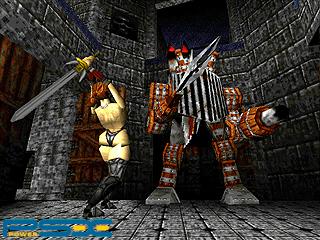-
Welcome to rpgcodex.net, a site dedicated to discussing computer based role-playing games in a free and open fashion. We're less strict than other forums, but please refer to the rules.
"This message is awaiting moderator approval": All new users must pass through our moderation queue before they will be able to post normally. Until your account has "passed" your posts will only be visible to yourself (and moderators) until they are approved. Give us a week to get around to approving / deleting / ignoring your mundane opinion on crap before hassling us about it. Once you have passed the moderation period (think of it as a test), you will be able to post normally, just like all the other retards.
You are using an out of date browser. It may not display this or other websites correctly.
You should upgrade or use an alternative browser.
You should upgrade or use an alternative browser.
NSFW Best Thread Ever [No SJW-related posts allowed]
- Thread starter Lord Chambers
- Start date
Drax
Arcane
Beautiful.
pippin
Guest
pippin
Guest
i do not really care about marvel but psylocke made me realize many things when i was a teen
Melcar
Arcane
Why don't we get anything like that these days?
pippin
Guest
Why don't we get anything like that these days?
Fantasy illustration is a dead art, killed mostly by the crappy american Heavy Metal mag and its fixation on just tracing pornstars instead of giving a chance to established creators. At one point it was Simon Bisley, Luis Royo and a bunch of nobodies.
- Joined
- Jan 28, 2011
- Messages
- 100,789















anus_pounder
Arcane
But not the FEAR LP? 
I take back your title of 'Murdersex'.
Seriously, the FEAR LP was good shit.

I take back your title of 'Murdersex'.
Seriously, the FEAR LP was good shit.

Max Stats
Liturgist
- Joined
- Nov 26, 2016
- Messages
- 1,091
i do not really care about marvel but psylocke made me realize many things when i was a teen
That that normal (for comics) proportioned british women can grow up to be large breasted japanese women if Jim Lee feels like drawing one. (not that there's anything wrong with that)
pippin
Guest
- Joined
- Jan 28, 2011
- Messages
- 100,789















- Joined
- Jan 28, 2011
- Messages
- 100,789















http://thedailywtf.com/articles/do-you-think-this-is-a-game
Sup Vault Dweller Elhoim Nick?
We’ve passed Christmas and made our way through a Steam sale with our wallets mostly intact, and now most of us have a pile of games that we’ll probably never actually play.
Game programming is hard. Setting aside the “cultural” problems in the industry- endless crunches, compensation tied to review scores, conflicts between publishers and studios, and a veneer of glamour over unglamorous work- the actual work of developing a game is a hard job.
Building a game engine is even harder. Not only do you have to build highly performant code, you have to build a system flexible enough so that game developers can build a game on top of it. You need to provide a set of high-level abstractions that make it easy for them to build a game, and this is where the problems come in.
For example, I went through a brief period of playing Frozen Cortex, an interesting approach at a turn-based sports game. I was stunned at how badly it performs, though. Weirdly, it’s not during gameplay that performance stinks, but when staring at the menus. I was puzzling over this for some time, when Anonymous sent us a message.
You see, Frozen Cortex is build on the Torque engine, and our anonymous submitter is working on a different game that also uses the Torque engine. And they’ve encountered a few… special warts.
Sup Vault Dweller Elhoim Nick?
- Joined
- May 13, 2009
- Messages
- 29,093
![The Year of Incline [2014] Codex 2014](/forums/smiles/campaign_tags/campaign_incline2014.png)


You missed the point of the whole article:
Game programming is hard, but sometimes, it seems like game engines make it actively harder.
- Joined
- Jan 28, 2011
- Messages
- 100,789















- Joined
- Apr 24, 2015
- Messages
- 21,318




- Joined
- Apr 24, 2015
- Messages
- 21,318




Sodafish
Arcane
- Joined
- Dec 26, 2012
- Messages
- 9,179
Melcar
Arcane
I bet Hillary was critical of Fallout 4. Maybe she was a fan of the true Fallouts? Maybe Trump likes Bethesda Fallouts? Holy shit! We have been played!
- Joined
- Jan 28, 2011
- Messages
- 100,789















I think Infinitron wants sexbad? to read him a bedtime story. He sucks his dragon dildos every turn.
catfood
AGAIN
Is that the long awaited sequel to Deathtrap Dungeon?
Siveon
Bot
- Joined
- Jul 13, 2013
- Messages
- 4,510

I thought about that game too, considering the first level is...Is that the long awaited sequel to Deathtrap Dungeon?
-The Az stone, which can be found in the DeathTrap Castle.
EDIT: I mean c'mon, there's way too many similarities:




























![Glory to Codexia! [2012] Codex 2012](/forums/smiles/campaign_tags/campaign_slushfund2012.png)











